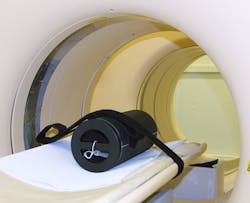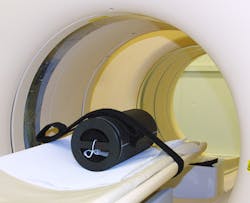NIST Standardizes Test “Phantom” for PET Scanners
Researchers at the National Institute of Standards and Technology, Gaithersburg, Md., have developed the first calibration tool for positron emission tomography (PET) scanners that is directly traceable to national measurement standards. Improved calibration should let doctors increase the accuracy of their diagnosis based on PET scans by a factor of three or more, according to NIST scientists.
Key to the calibration method are “phantoms,” devices commonly used to check and calibrate medical imagers. They are designed to give consistent, reliable readouts when placed in a PET scanner. They consist of a lightweight hollow cylinder about the size of a two-liter bottle. They contain a small amount of radioactive germanium, which glows brightly in a PET scanner readout. The germanium replicates the radioactive tracers commonly given to patients prior to a PET scan. By measuring the phantom’s brightness every day, technicians get a benchmark on the scanner’s sensitivity that lets them more accurately compare patient scans taken on different days.
Tests of the phantoms revealed that they could lead to much more precise PET scans. For example, current PET scans let doctors estimate the size of tumors to ±20%. Proper calibration could bring that margin of error down to ±5%. This would aid in quickly determining the proper treatment for patients.

